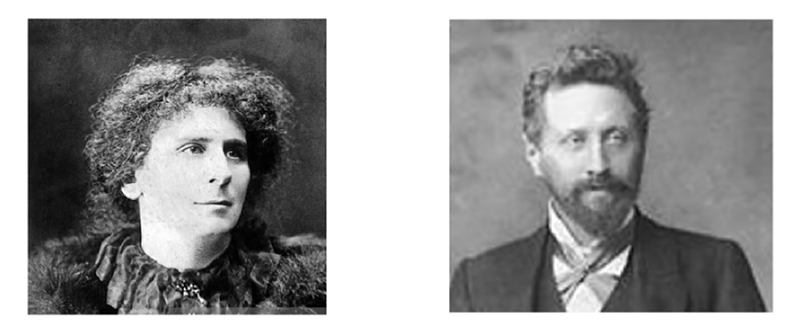[Kathy] recently posted an interesting video about the connection of an electronics pioneer named [Hertha Ayrton] to the arc transmitter. The story starts with the observation of the arc lamp — which we learned was a typo of arch lamp.
[Hertha] was born into poverty, but — very odd for the day — obtained a science education. That’s probably a whole story in of itself. During her schooling, she fell in love with her professor [William Ayrton] and they wed.
[Hertha] took over her husband’s research into arcs and made impressive results in understanding the physics of an arc. The key finding was that in some cases increasing the voltage would decrease the current. This implied that the arc had negative resistance.
There’s a lot more to the story involving one of [William’s] graduate students and a man named [Poulsen] who made the arc transmitter more reliable. We’ll let you watch the video to find out more.
The end of the story about [Jack Phillips] on Titanic is pretty well known. But we didn’t know all the background about how the arc transmitter came to be or that the improved [Poulsen] transmitter would have possibly averted the disaster.
Our old friend [Reginald Fessenden] makes a surprise appearance at the end of the video. Watch for him. If you think these old radios weren’t subject to being hacked, think again.















That’ll be Ayrton, not Aryton.
This was a surprisingly good video. I just read the book Thunderstruck, about Marconi and the radio, and one of the many technical things that this book left me wanting was an understanding of how they went from a spark-gap transmitter to something that could be tuned. This video filled that in.
I’m glad you liked it. I thought Thunderstruck was a fabulous book but I find almost all history books skip the real science and almost all science book skip the real history!
I’m going to do a whole series on early radio on my YouTube page (and if/when the gods of publishing get their act together publish a book on the history of electricity).
Kathy
” a typo of arch lamp ” That was a good one! Not assuming it was intentional – but it still made me laugh!
If you watch the video the story is the spark made an arch. He called it an arch lamp, but it got typo’ed into arc. I can’t personally vouch for how true that is or not, but that’s the story. I’m old, but I’m not that old. lol
Nice to know the story behind the word! Funny how some come into common usage like that.
I’d always wondered why an arc was called an arc since it is generally a straight line. If this “arch” –> “arc” story is true it would at least make a little more sense.
I always thought it might be a corruption of spark but that was just a guess. Spark -> ark -> arc.
I always thought an “arch” was curved in an “arc” though not a perfect circle segment, so I’m not sure why this story being true helps it make more sense.
Anyway, I always pictured the arcs (arches?) on a Jacob’s latter which do seem to curve in an arc.
Casting a vote that this article be tagged in the biography and/or history article lists.
There’s a lot of potential in this type of video! It gives an explanation of the physics placed on context of the history. Well done, Kathy! I’m going to watch a few more of these.
English is not my native language. Have always assumed that arc = arch, and have been wondering why it spelled differently in math and architecture texts..
https://en.m.wikipedia.org/wiki/Arc_(geometry)
https://en.m.wikipedia.org/wiki/Arch
Dictionary says:
Arc
ORIGIN – Middle English: via Old French from Latin arcus ‘bow, curve’.
So I’d say this typo story is bit iffy.
The word arc is not pronounced the same way arch is pronounced
You can look in the Bible, but boat? The word has many roots.
The spark gap is the oldest active 2 terminal component. Older than tubes(valves) and galena minerals.
Diodes constructed using minerals are passive components, not active components. What word has many roots? arc and arch are two different words. two cases of comparing an apple to an orange.
Arc is a word that has meaning different than word arch, I have to wonder what numbskull thought the thought they saw a typo,who who believed them, and how long the typo falsehood had been going on? I have to feel Kathy has little practical experiance in or bout radio. Given the receivers of the day and the wavelengths chosen, there is now way two arc-gap radio stations could have operated simultaneously on the Titanic at the data rates that would be demanded by the ship’s owners. Unfortunate that “negative resistance” has become a term, does little to describe the phenomenon, that makes it appear negative resistance can exist.
According to Wikipedia (which has a footnote to a book published in 1900):
The concept of carbon-arc lighting was first demonstrated by Sir Humphry Davy in the early 19th century (sources disagree about the year he first demonstrated it; 1802, 1805, 1807 and 1809 are all mentioned), using charcoal sticks and a two thousand cell battery to create an arc across a 4-inch (100 mm) gap. He mounted his electrodes horizontally and noted that, because of the strong convection flow of air, the arc formed the shape of an arch. He coined the term “arch lamp”, which was contracted to “arc lamp” when the devices came into common usage.[4]
The arc lamp provided one of the first commercial uses for electricity, a phenomenon previously confined to experiment, the telegraph, and entertainment.[5]
[4] Slingo, William; Brooker, Arthur (1900). Electrical Engineering for Electric Light Artisans. London: Longmans, Green and Co. p. 607. OCLC 264936769.